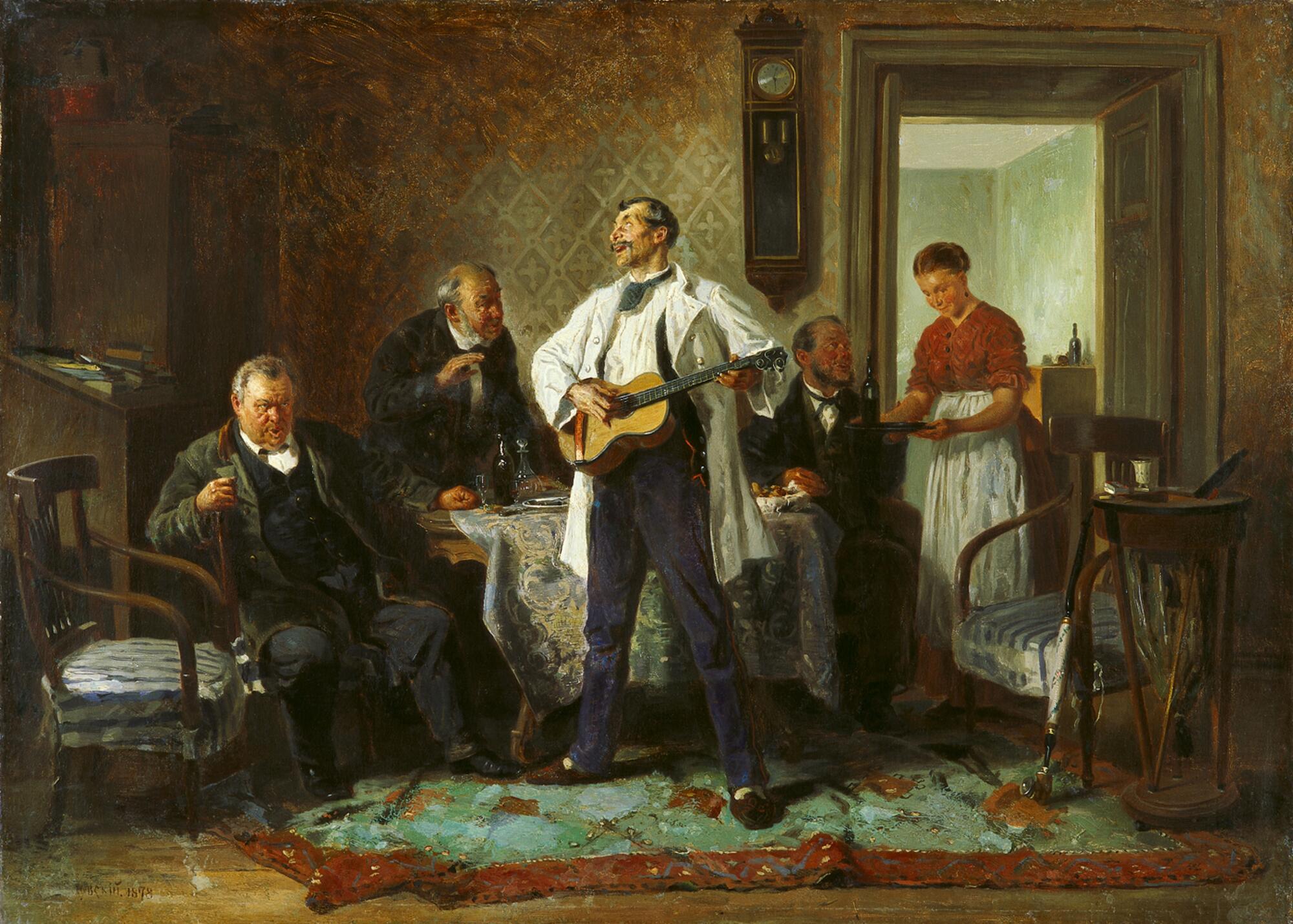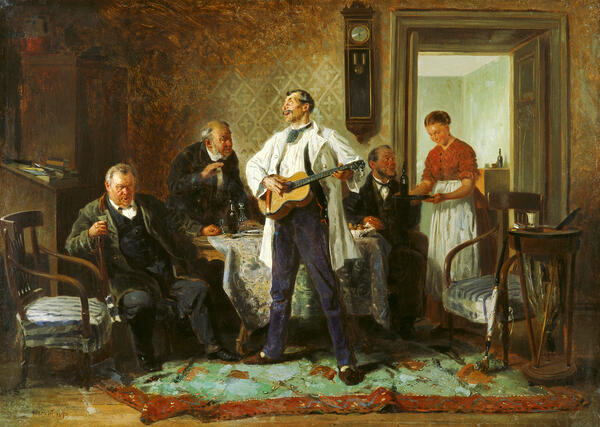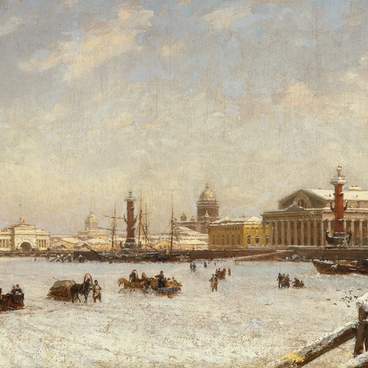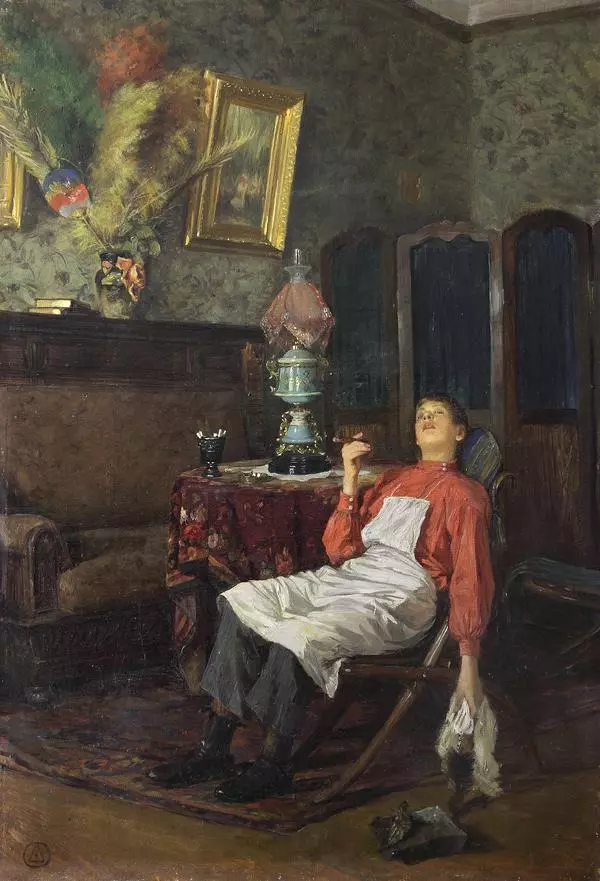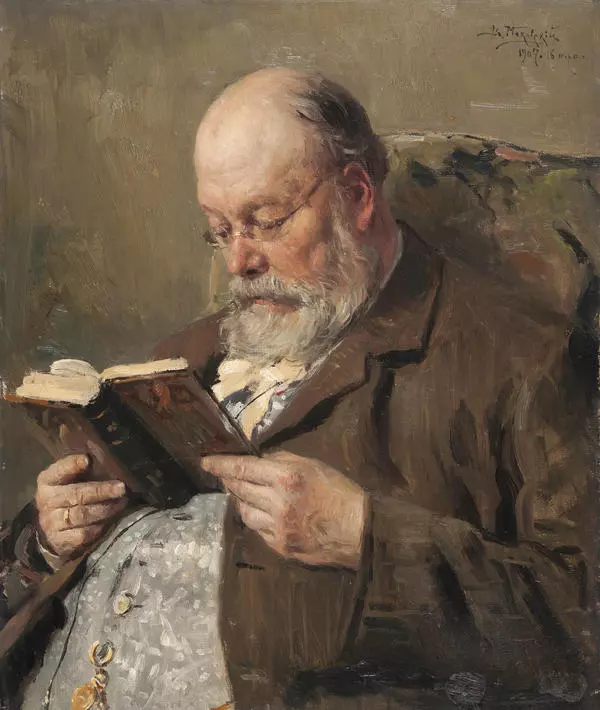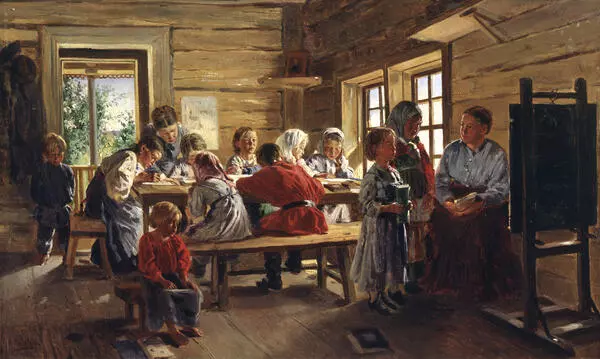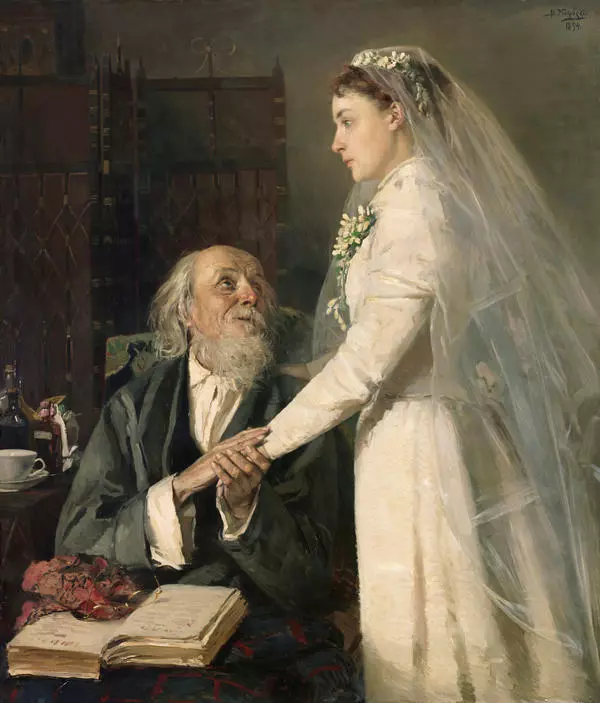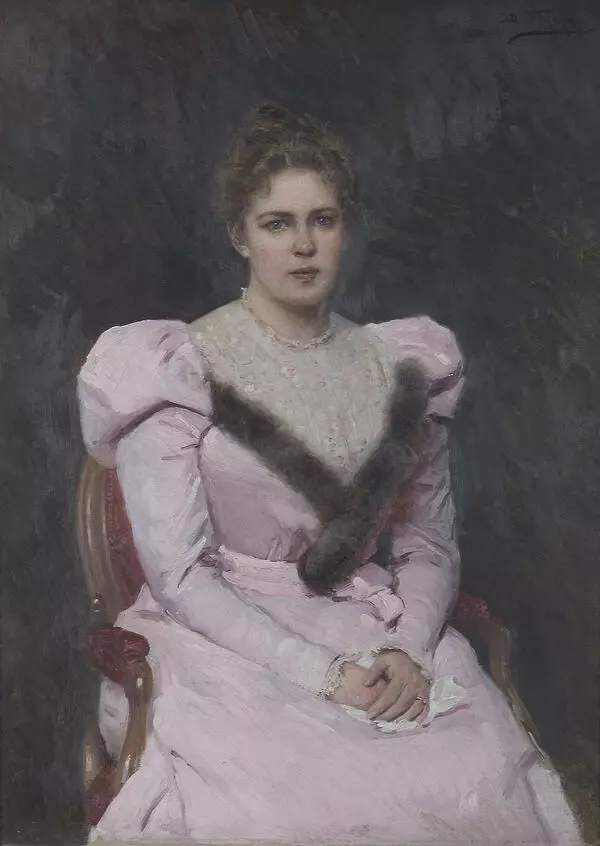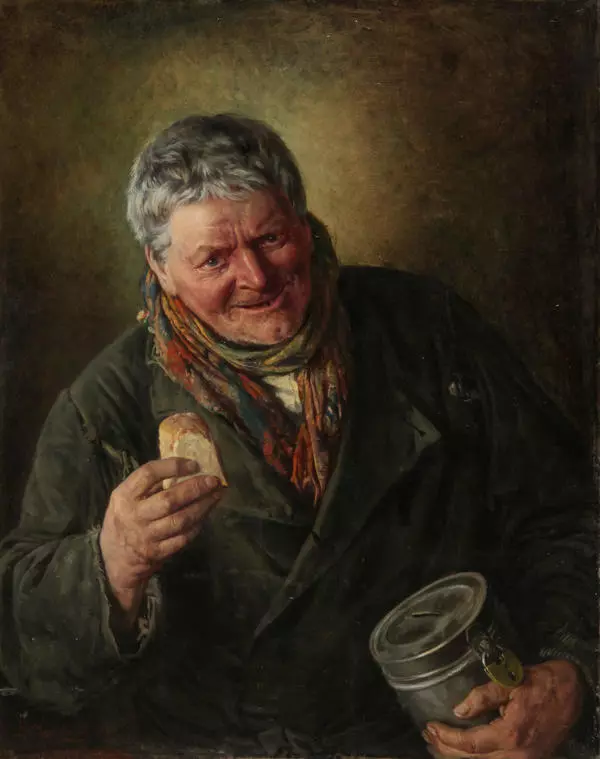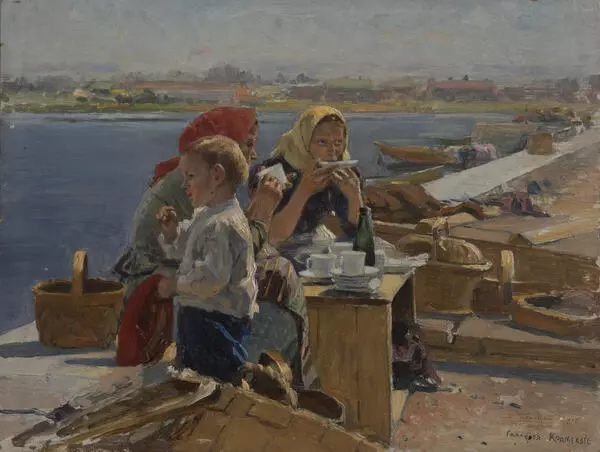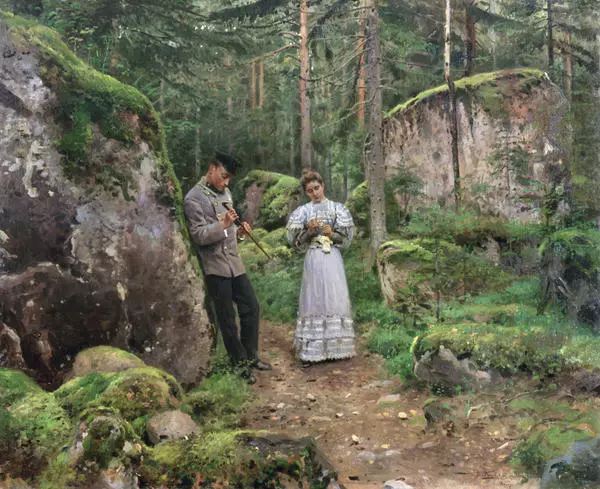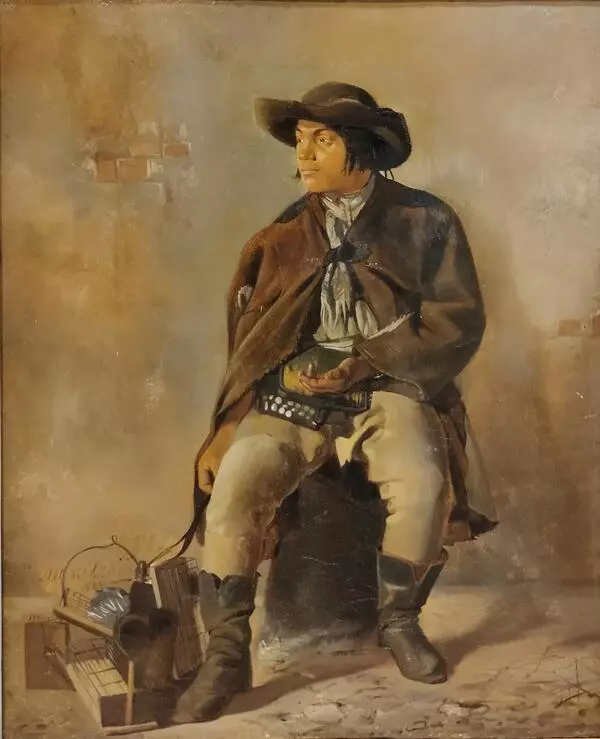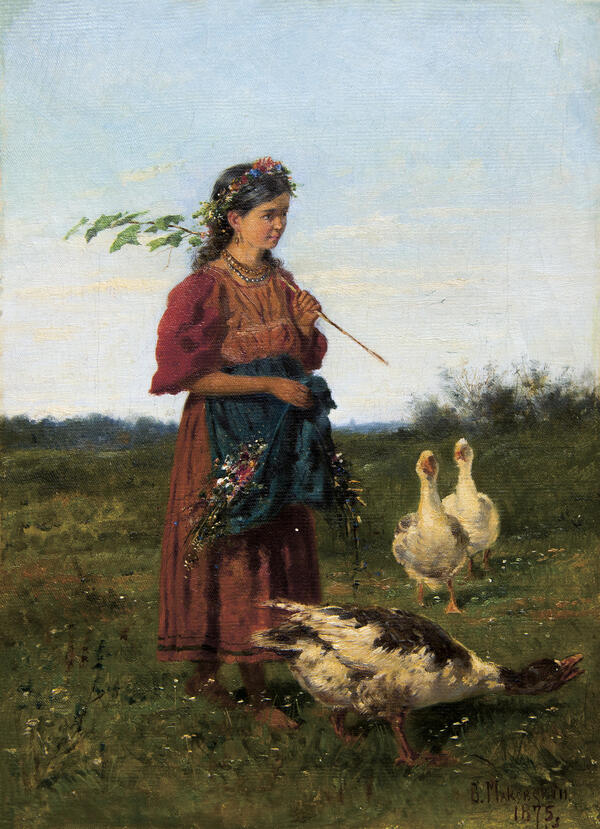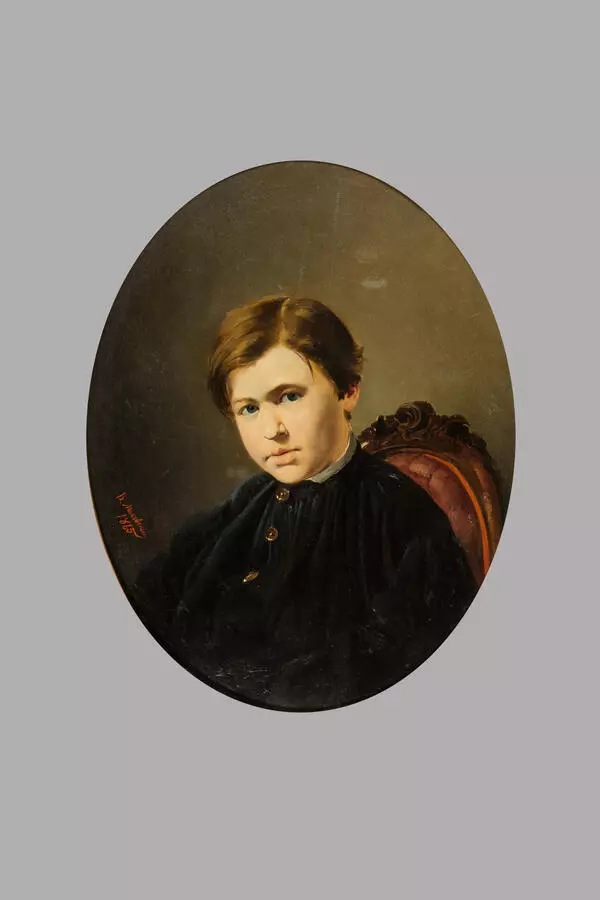The genre painting is a genre of visual art dedicated to everyday, private and public life, usually the artist’s times. Studies and paintings on everyday subjects were characteristic of all eras. However, the recognition and development of this genre took place in Holland in the 17th century. Scenes of private houses, taverns, markets became very popular, so more and more artists painted them.
In Russia, genre painting gained recognition thanks to the Wanderers [Peredvizhniki]. These artists’ paintings showed the work of ordinary people and the challenging conditions in which they lived. Vladimir Makovsky became a member of the Society of Travelling Art Exhibitions. He was born into a family of painters. Since childhood, Makovsky was surrounded by the atmosphere of art; his sister and brothers also became artists. Vladimir Makovsky took lessons from Vasily Tropinin, worked with Vasily Perov, Alexey Savrasov, Illarion Pryanishnikov, and other famous masters.
In the 1880s, two informal trends in genre painting developed in the Society. One of them was headed by Ilya Repin, whose genre works resembled modern-themed historical paintings. The second direction was headed by Vladimir Makovsky, who captured private fragments of everyday life, focusing on details. The artist could prepare more than 20 canvases for each exhibition.
Makovsky had the talent of a caricaturist, which could be seen in the sketches, drawings, and rough drafts that the artist left in his sketching albums. This talent is also noticeable in his paintings. Makovsky always subtly painted the mimics of the characters, sometimes exaggerating the images, making them similar to caricatures. His works are imbued with gentle humor, lyricism; there is no morality in them.
One of these paintings is the canvas ‘Friends’, which Makovsky created in 1787. Here, the artist successfully demonstrated his skills of a portrait painter since each character’s personality and destiny could be read between the lines of the painting. The works of Makovsky and other realist artists are often compared to theatrical mise-en-scenes featuring vivid characters.
In Russia, genre painting gained recognition thanks to the Wanderers [Peredvizhniki]. These artists’ paintings showed the work of ordinary people and the challenging conditions in which they lived. Vladimir Makovsky became a member of the Society of Travelling Art Exhibitions. He was born into a family of painters. Since childhood, Makovsky was surrounded by the atmosphere of art; his sister and brothers also became artists. Vladimir Makovsky took lessons from Vasily Tropinin, worked with Vasily Perov, Alexey Savrasov, Illarion Pryanishnikov, and other famous masters.
In the 1880s, two informal trends in genre painting developed in the Society. One of them was headed by Ilya Repin, whose genre works resembled modern-themed historical paintings. The second direction was headed by Vladimir Makovsky, who captured private fragments of everyday life, focusing on details. The artist could prepare more than 20 canvases for each exhibition.
Makovsky had the talent of a caricaturist, which could be seen in the sketches, drawings, and rough drafts that the artist left in his sketching albums. This talent is also noticeable in his paintings. Makovsky always subtly painted the mimics of the characters, sometimes exaggerating the images, making them similar to caricatures. His works are imbued with gentle humor, lyricism; there is no morality in them.
One of these paintings is the canvas ‘Friends’, which Makovsky created in 1787. Here, the artist successfully demonstrated his skills of a portrait painter since each character’s personality and destiny could be read between the lines of the painting. The works of Makovsky and other realist artists are often compared to theatrical mise-en-scenes featuring vivid characters.
